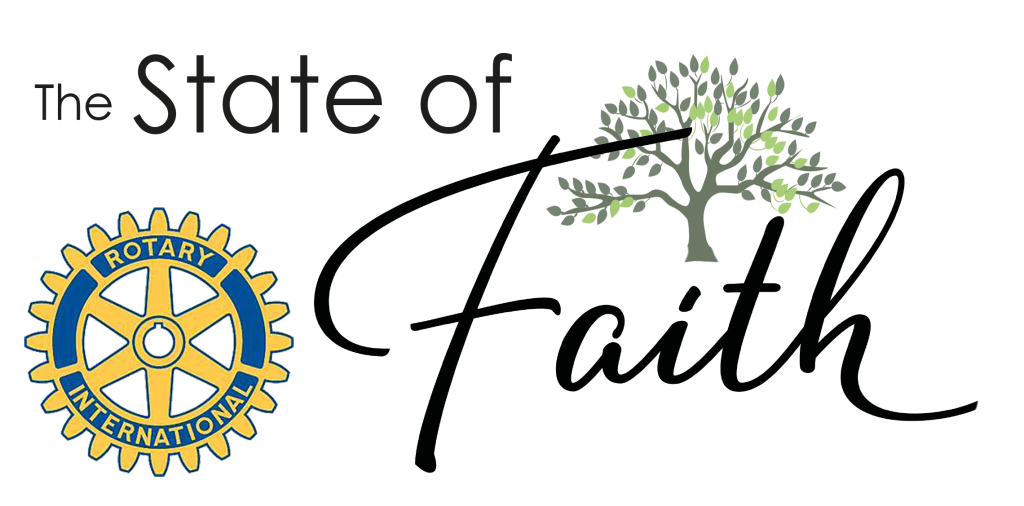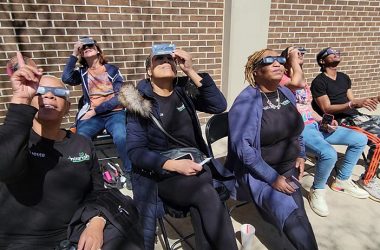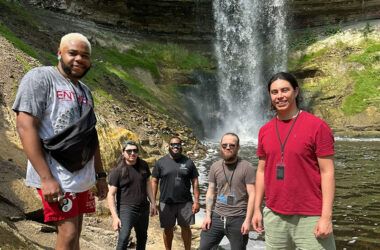
Note: The State of Faith series explores spiritual life in the Homewood and Flossmoor area. In the first installment, we speak with the leader of a multicultural church in Flossmoor about how its mindset helped it thrive during tumultuous times. Series sponsor: Homewood Rotary Club.
Pastor Geno Olison started South Suburban Vineyard Church, 3400 196th St., Flossmoor, in 2009 with an intentionally multi-ethnic vision. Olison, who is Black, established the church with his wife, Shannon, who is white, and a small, diverse team. The church has grown from meeting in the basement of St. Paul’s Community Church in Homewood to its permanent home in Flossmoor.

HFC: After doing research, you deliberately started a multicultural church in the H-F area. Why?
GO: We put a whole lot of our eggs in the multicultural church because of how it transforms the worldview of the people who come here. It forces you to interact with worldviews and belief systems that you wouldn’t encounter on your own.
You’re getting schooled in loving people that you don’t choose. You’re getting a Christian education alongside your social education. You come to church to be challenged and informed, to see and find value in people who are different from you.
Our faith says you should tell everybody, spread the message to all. If you live a homogeneous life, you might not consider that other group of people as part of that. It expands your imagination of who God cares about and who you should touch with the message.

You said the church’s deliberately multicultural approach helped it survive the COVID shutdown, in the context of how it handled the topic of racial unrest during that time.
It helped us thrive during that time. When you have the mindset we started with — considering who’s on stage, what issues we talk about — from the beginning, you become a church that’s more thoughtful than homogeneous churches are.
When you got to the racial crisis that happened, if a church did say something, it was clunky and unprepared. If you weren’t a church that had already gotten good at holding space for those conversations to happen, you struggled. If the congregation wasn’t used to living in the tension that happens when you get lots of different people together, it was difficult.
Our church had already been talking about race. Issues of race were already in the diet of our preaching, the complex issues of police brutality. We were already sitting down and working on respecting each other.
When you reopened for in-person services in November 2020, you said new members were drawn to the church because of its work on race issues.
What a lot of them reflected when they got here was that their church didn’t show up well for the pandemic, or the racial crisis, or the political crisis. Their leader didn’t show up like they thought. Some people found out the churches they were attending weren’t what they thought they were.
(Some churches) weren’t talking about the political crisis, to help people frame the gospel in light of the news of the day. As the saying goes, “Good preachers should have the Bible in one hand and a newspaper in the other.”
Some people say they don’t want their preacher talking about politics or race. If you’re a brown person of faith, you feel like, “How could my preacher not talk about these things?”
South Suburban Vineyard has about 200 church members, and at least one third of them have joined since the onset of the COVID pandemic. How did people find the church?
Through our online services. We set up in my basement and started doing a livestream, and we got a surge of people watching. During COVID, people could do church shopping. Before, you had to miss your service to see another service. At the most pivotal time in all of our lifetimes, you got to see what a church was about.
This bolstered financial giving, also?
We were really surprised that as the pandemic went on, giving really surged. We fared well during COVID while other churches needed to take out PPP loans. Our theory is that all these new people who were watching us remotely started giving online.
Our (church members) weren’t too affected by the pandemic. Many of them could work at home, so their income wasn’t affected. People were getting stimulus benefits, so many people continued to give generously.
Also, a couple years before COVID, we started promoting online giving. That systematized giving for a lot of people. Now the vast majority of people give electronically versus cash or check on Sunday morning.
(In 2022) we started to experience some effects of recession. Also some of our families have moved, so we’ve seen a dip in giving.
Small groups meet at church throughout the week. Your Sunday services are from 10:30 a.m. to noon on Sundays, available in person and online. What can people expect?
You’ll see a full band of different looking people on stage, including guitar, drums, bass and singers. They’re singing songs about Jesus, but mostly songs to God, and leading the congregation in spirited worship. Some songs are gospel, some are contemporary Christian music, influenced by diverse singers. We have three to four songs, followed by welcome and announcements.
Then we have about 40 minutes of preaching, followed by one final song and ministry time, which is when people can receive prayer on the spot or to respond to the charge for the day. On our website, people can watch our services live, or on demand.



